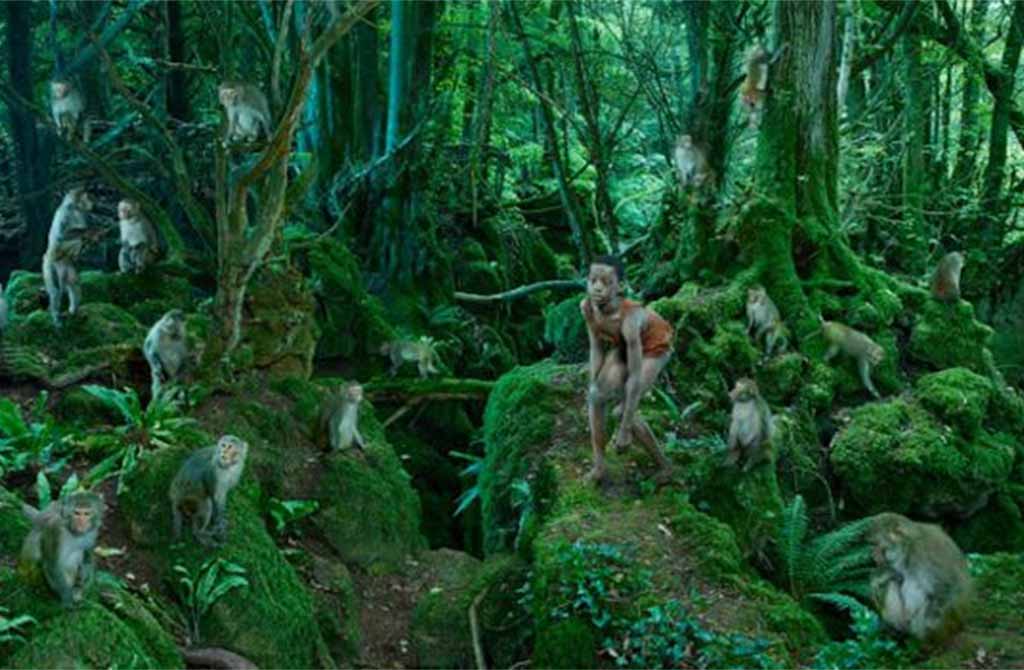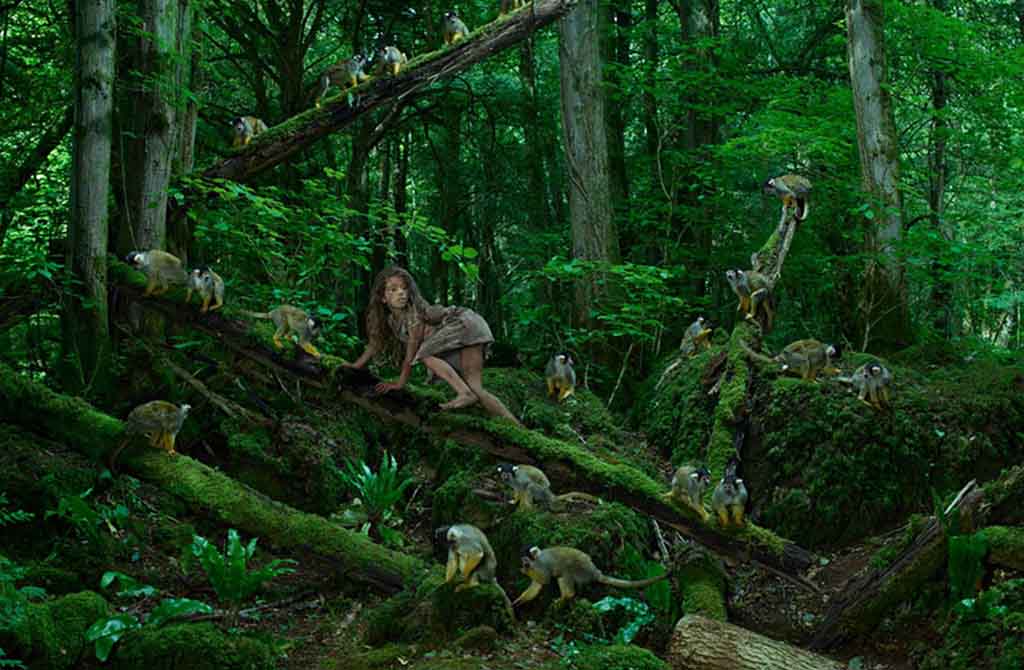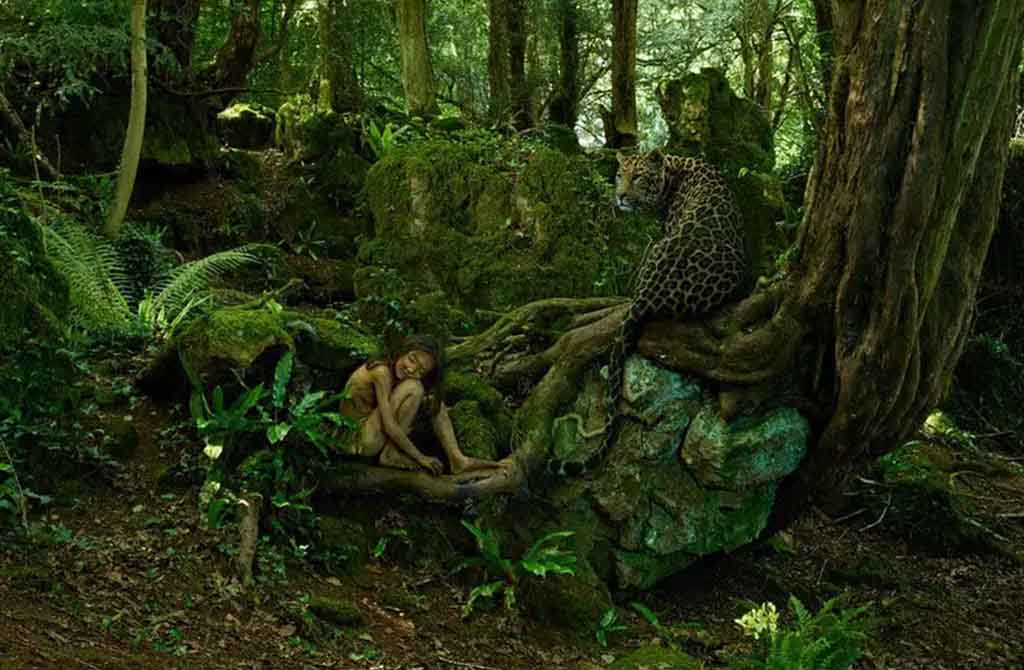June 26, 2020
Mother-wolf: three stories about children raised by wild animals
We are no longer surprised by stories in which people pick up the cubs of wild animals, for various reasons left without a mother. And are there "stories on the contrary", when children are brought up by animals alone?
Yes, and there are many such cases. In the role of foster parents were wolves, dogs, monkeys, leopards, bears, elephants, pandas and even eagles! We have selected three of the most striking stories for you.
Girls-wolf The most famous story took place in India. Its beginning is similar to the plot of a horror movie. In a small village Godaari comes a group of missionaries. Local residents ask to be rid of the restless spirits that roam around the village at night. The missionaries agree. Starting the hunt for ghosts, they discover a wolf's lair, and in it-a wolf, a cub of two girls, about 8 and 1.5 years old. It was as if they had never seen a human being in their lives and thought they were wolves. They walked on all fours, growled, howled, bit, and refused any food except raw meat. The girls were taken from a "foster home" and named Amala and Kamala.
The most famous story took place in India. Its beginning is similar to the plot of a horror movie. In a small village Godaari comes a group of missionaries. Local residents ask to be rid of the restless spirits that roam around the village at night. The missionaries agree. Starting the hunt for ghosts, they discover a wolf's lair, and in it-a wolf, a cub of two girls, about 8 and 1.5 years old. It was as if they had never seen a human being in their lives and thought they were wolves. They walked on all fours, growled, howled, bit, and refused any food except raw meat. The girls were taken from a "foster home" and named Amala and Kamala.
They were never weaned from their" wolf " habits. The youngest, Amala, developed faster than her sister, but died of kidney failure about a year later. Kamala lived to the age of 17, learned about 40 words, learned to walk on two legs and eat with her hands, but died of the same disease as her sister. Apparently, raw meat is still not the most suitable food for humans.
It remains a mystery where these girls came from, whether they were really sisters, and how they got to the wolves. However, some scientists consider this story to be a falsification.
Monkey children
But there is no doubt about the veracity of the following story, because the main character, John Sebunya, and the people who found him are alive and can confirm every word. It happened in Uganda. A three-year-old boy witnessed his father kill his mother during an argument. Scared, he ran into the jungle, got lost, and was accepted into a pack of monkeys, who taught him how to get food and hide from predators.  Three years later, the boy was found by hunters and taken to the village. Life in the rainforest was not easy for the baby: his body was full of scars, he suffered from intestinal infection and parasites. The child was cured and placed in foster care. Since John lived with people until he was three years old and had already started talking, he was able to quickly adapt and adopt human behavior. The boy turned out to have a beautiful voice, he toured with the famous choir "the Pearl of Africa".
Three years later, the boy was found by hunters and taken to the village. Life in the rainforest was not easy for the baby: his body was full of scars, he suffered from intestinal infection and parasites. The child was cured and placed in foster care. Since John lived with people until he was three years old and had already started talking, he was able to quickly adapt and adopt human behavior. The boy turned out to have a beautiful voice, he toured with the famous choir "the Pearl of Africa".
What became of the boy's father, and whether he was punished for the murder of his mother, history is silent.  A similar story occurred on another continent, in South America. The life of the Colombian Marina Chapman, so rich in events that they would be enough for an entire series. When the girl was 4 years old, she was kidnapped from the street and left in the jungle. There, a child dying of hunger and thirst was taken into the care of a Capuchin monkey. When the girl was found by hunters 5 years later, she climbed trees as well as her foster parents and communicated with monkeys in their language.
A similar story occurred on another continent, in South America. The life of the Colombian Marina Chapman, so rich in events that they would be enough for an entire series. When the girl was 4 years old, she was kidnapped from the street and left in the jungle. There, a child dying of hunger and thirst was taken into the care of a Capuchin monkey. When the girl was found by hunters 5 years later, she climbed trees as well as her foster parents and communicated with monkeys in their language.
Unfortunately, the hunters turned out to be poachers and sold her to a brothel as a servant. But the child who managed to survive in the forest had a lot of stamina and courage. Marina escaped from a brothel, but was caught again and fell into a local mafia family, where she lived as a slave.
A neighbor took pity on the girl and secretly sent her to Bogota to her daughter. From there, the girl moved to Yorkshire, away from the jungle and the mafia. In England, she married a scientist, had two children, and published a book about her life in the jungle. There are many similar stories. But not all of them ended as well as John and Marina's. Many children who lived their first years among animals were never able to return to the world of people, learn speech and communication skills. They either died quickly, or remained inmates of institutions for the mentally ill for the rest of their lives. But they had excellent immunity, were physically stronger and more resilient than their peers who grew up among people. The study of Mowgli children helped scientists understand how important the first years of life are for human development and what role their environment plays in this.
There are many similar stories. But not all of them ended as well as John and Marina's. Many children who lived their first years among animals were never able to return to the world of people, learn speech and communication skills. They either died quickly, or remained inmates of institutions for the mentally ill for the rest of their lives. But they had excellent immunity, were physically stronger and more resilient than their peers who grew up among people. The study of Mowgli children helped scientists understand how important the first years of life are for human development and what role their environment plays in this.
Author: Maria Astakhova
Read more
July 31, 2024
April 12, 2024
April 5, 2024